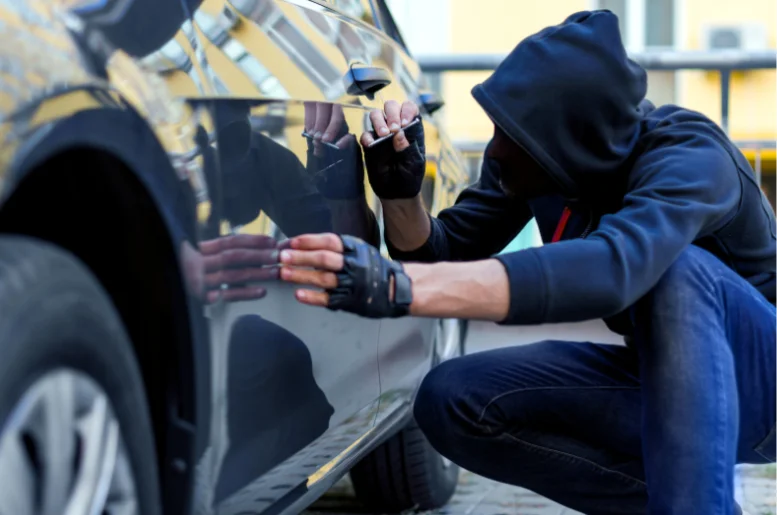Car vandalism remains a frustrating reality for many vehicle owners. From a scratched paint job to broken windows, these acts of vandalism not only disrupt your daily routine but can also inflict significant financial damage. Understanding how your car insurance comes into play during these unfortunate events is crucial. This comprehensive guide delves into what comprehensive coverage entails, how it handles vandalism, and what steps you should take if your car is vandalized.
Definition of Car Vandalism
Car vandalism refers to any intentional damage inflicted on your vehicle. This can range from relatively minor offenses like keying (scratching) the paintwork to more severe forms of damage such as smashing windows or slashing tires.
Vandalism is not limited to these acts; it can also include more creative yet destructive methods like pouring sugar into the gas tank, which can cause extensive engine damage. Recognizing these acts as vandalism is essential for understanding your coverage options and ensuring that your vehicle is adequately protected.
Comprehensive Coverage and Vandalism
When it comes to car insurance, comprehensive coverage is your shield against vandalism. This form of insurance is designed to cover the cost of repairing your vehicle following non-collision-related incidents. It’s crucial to remember that comprehensive coverage usually requires a deductible — the amount you pay out of pocket before your insurance coverage kicks in.
This deductible varies based on your policy terms and can range anywhere from $0 to $2,000. Before filing a claim, compare the repair costs with your deductible; if the cost of repairs is only slightly more than the deductible, it may be more economical to pay out of pocket rather than file a claim.
Impact of Vandalism Claims on Insurance Rates
One common concern among car owners is whether filing a vandalism claim will increase their insurance premiums. The impact of a vandalism claim on your insurance rates can vary. In many cases, insurers view vandalism as an uncontrollable event, meaning it might not affect your premiums as much as an at-fault accident would. However, if you have a history of multiple claims, your insurer may consider you a high-risk client, which could lead to increased rates. It’s advisable to have a conversation with your insurance provider to understand how a vandalism claim might affect your future premiums.
Immediate Steps After Vandalism
If you find yourself the victim of car vandalism, immediate action is critical:
- Document the Damage: Conduct a thorough evaluation of all the damage to your vehicle. It’s important to determine not only the visible damages like broken glass or scratched paint but also any possible internal damages, such as tampering with the lock system or the engine.
- File a Police Report: Contact the local authorities and file a detailed report as soon as possible. A police report is a critical document when it comes to filing an insurance claim.
- Photographic Evidence: Take detailed photographs of all the damages. These photos serve as valuable evidence for your insurance claim.
- Notify Your Insurance Provider: Reach out to your insurance company immediately. Provide them with all the necessary information, including the police report and photographs of the damage. Your insurer will guide you through the claims process and may send an assessor to evaluate the damage.
Preventive Measures to Protect Your Car
Preventing vandalism is often about deterring potential vandals:
- Visibility: Park in well-lit and populated areas whenever possible. Vandals are less likely to target cars that are easily visible to passersby and surveillance cameras.
- Security Systems: Invest in a good car alarm system. Visible signs indicating that your car is protected by an alarm system can serve as a deterrent.
- Remove Temptation: Never leave valuables in your car, especially in plain sight. Items like phones, laptops, or even loose change can tempt vandals.
Specific Scenarios and Responses
Dealing with specific vandalism acts requires immediate and appropriate actions:
- Broken Windows: Cover broken windows with a temporary seal to protect the interior from the elements. This is important as further damage caused by negligence might not be covered by your insurance.
- Keyed Car: Seek a quote for repairs from a reputable body shop as soon as possible. Quick repair is essential to prevent issues like rust, which could lead to more extensive damage and higher repair costs.
- Stolen Parts: In cases where parts of your car, such as the catalytic converter, are stolen, comprehensive insurance typically covers the replacement. Report these thefts immediately to both the police and your insurance provider.
Handling Theft and Vandalism
Theft and vandalism often go hand-in-hand. Comprehensive insurance covers not just vandalism but also theft of your vehicle. This means if your car is stolen, or parts like the catalytic converter are taken, your comprehensive coverage should cover these losses. In these situations, follow these steps:
- Stolen Car: If your vehicle is stolen, immediately report it to the police and your insurance provider. Having comprehensive coverage ensures that you can recover the value of your car, helping you get back on the road.
- Catalytic Converter Theft: Catalytic converter thefts have become increasingly common due to the valuable metals they contain. If your catalytic converter is stolen, your comprehensive coverage should cover the replacement cost. However, be prepared to pay your deductible, which is the initial out-of-pocket expense before your insurance kicks in.
Additional Preventive Measures: Protecting Your Car from Vandalism
While the preventive measures mentioned in the article are useful, there are additional steps you can take to further protect your car from vandalism. Here are some valuable tips and strategies to safeguard your vehicle:
- Install Motion-Activated Lights: Motion-activated lights can deter potential vandals by illuminating the area around your car when motion is detected. Install these lights in your driveway, garage, or parking area. Vandals are less likely to target well-lit areas where their actions can be easily observed.
- Use Steering Wheel Locks: Steering wheel locks are visible deterrents that make it difficult for thieves or vandals to operate your vehicle. These devices attach to your steering wheel, preventing it from turning. They are effective at discouraging unauthorized access to your car.
- Consider a Garage or Car Cover: If you have access to a garage, use it to park your car overnight and when not in use. A garage provides excellent protection against vandalism and theft. If a garage is not available, consider using a car cover. A car cover not only conceals your vehicle but also adds an extra layer of protection.
- Vehicle Tracking Systems: Invest in a vehicle tracking system that can help locate your car in the event of theft. Some tracking systems are discreet and can be hidden within your vehicle. Knowing that your car is equipped with a tracking device can discourage thieves and vandals.
- Join a Neighborhood Watch Program: Participating in a neighborhood watch program can enhance security in your community. These programs involve residents keeping an eye out for suspicious activities and reporting them to local authorities. A strong sense of community can deter criminals.
- Use Window Etching: Consider having your vehicle identification number (VIN) etched onto your car’s windows. This makes it less attractive to thieves who may intend to sell the stolen vehicle or its parts. It also aids in the recovery of your car if it is stolen.
- Secure Valuables: Avoid leaving valuables in your car, especially in plain sight. Items like smartphones, laptops, and bags can tempt vandals. Remove all valuables from your car or store them in the trunk or a hidden compartment.
- Regular Maintenance: Keep your car well-maintained to reduce the risk of vandalism. A vehicle that appears cared for is less likely to be targeted. Repair any existing damage promptly to prevent further deterioration.
- Be Mindful of Parking Locations: When parking in public areas, choose well-lit and populated spots. Vandals are less likely to strike in areas with a high level of foot traffic and visibility. Avoid parking in secluded or dimly lit locations.
- Security Decals and Stickers: Consider placing security decals or stickers on your car’s windows. Even if you don’t have a security system, these decals can create the impression that your vehicle is protected, deterring potential vandals.
By incorporating these additional preventive measures, you can significantly reduce the risk of your car falling victim to vandalism. Remember that a combination of security strategies, along with comprehensive insurance coverage, can provide comprehensive protection for your vehicle and peace of mind for you as a car owner.
FAQs
How does comprehensive coverage work in protecting against vandalism?
Comprehensive coverage is designed to cover the cost of repairing your vehicle following non-collision-related incidents, including vandalism. It helps you recover repair costs, minus your deductible.
Can I choose the repair shop for vandalism-related damage, or does the insurance company dictate where I should go for repairs?
In many cases, you have the freedom to choose the repair shop for vandalism-related damage. However, some insurance policies may have preferred or recommended repair shops.
Will comprehensive coverage cover acts of vandalism that occur while my car is parked in my own garage?
Comprehensive coverage typically covers vandalism, even if it happens in your own garage. However, it’s essential to check your policy for specific terms and conditions.
Are there any discounts or incentives for installing additional security measures in my car, such as an alarm system?
Some insurance companies or agencies like tutenagency, an exclusive agent with Allstate may offer discounts for installing security measures in your car. It’s a good idea to inquire with your insurer about potential discounts.

